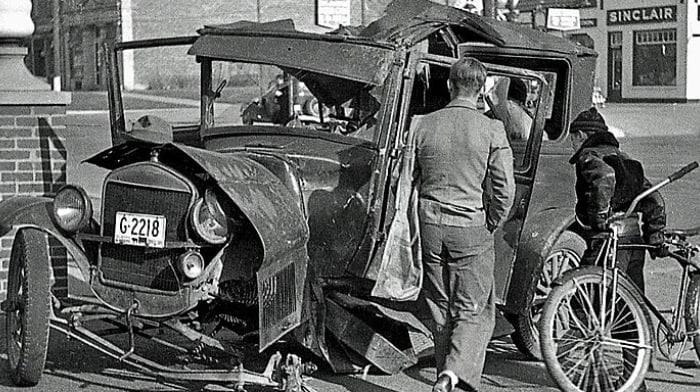
November 11 is an unusual holiday in the United States. What we now generally know as Veteran’s Day is a time to think about and thank those who have served our country in the military for their service.
But it didn’t start out that way. It was originally meant to commemorate the end of “the Great War,” World War I.
While much has been studied about American soldiers fighting overseas, we don’t see a lot about what every day life was like for the average American during that time in our history. Let’s take a look at what life was like for Americans in the heart of the war years, 1915. (The Great War started without us, we wouldn’t join until 1917.)
Some amazing things took place that year.
In January, after the House of Representatives struck down a proposal giving women the right to vote. In October of that year, 25,000 women marched up 5th Avenue in New York City to demand the right to vote.
Also in January of that year, Alexander Graham Bell made the first transatlantic phone call to Thomas Watson. In May, “the Great Bambino,” Babe Ruth, hit his first career home run, and American girls were introduced to Raggedy Ann.
How did World War I begin? With the assassination of Archduke Franz Ferdinand and his wife. pic.twitter.com/lgoC4V26Um
— tartary and antiquity (@AndTartary) November 2, 2022
RELATED: With States Hands-Off, Homeschooling Takes Off
Life In America
How Americans lived and worked depended greatly on if they lived in a rural or urban setting. If you lived in a small town, you probably lived in a house. If you were a city dweller, depending on your occupation, you might have lived in an apartment.
If you were on the lower end of the economic scale, you might live in crowded tenements with other people of your same racial or ethnic background.
If you were a stay at home mom, as many were because families were larger, and if yours was a working class family, your house did not contain a lot of modern conveniences. Having your own bedroom was unheard of, and often several children slept in the same bed.
Your home more than likely had no running water, and was heated by a coal stove. Less than one third of American households had electricity.
Everyday tasks for the average housewife were more time consuming. Refrigerators were small, therefore requiring more shopping trips. And if you were the lady of the house, your shopping trips, in addition to a grocer, included a trip to the butcher, or a fish market.
The “five and dime” store was also becoming more popular. Doing the wash meant putting clothes through a hand ringer and hanging them on a clothesline to dry.
Sears 1915-1920 model home. pic.twitter.com/aZhph7QZO6
— Jim Metcalf (@gwi209) November 3, 2022
RELATED: Democrats Turn 2022 Into ‘1984’
Not All Work And No Play
If you lived in the city or were particularly successful, you might have been lucky enough to own a Ford Model T. But it was not practical if you lived in the country for a simple reason, there were not many roads outside of urban areas. Transportation in the city, if it wasn’t a car, was a streetcar or by foot. In the country, a horse or your own shoe leather.
Fashion in 1915 was a bit on the boring side. For men who worked in offices, suits that closely resemble those worn today were the norm. For women, dress hemlines were beginning to move upward, mainly because certain fabrics were conserved for the war effort. And thankfully, corsets were on the way out.
Even having fun was a bit different depending on where you lived. City dwellers could go see a Vaudeville show, or catch a movie at the local Nickelodeon.
In the country, you might be a bit more limited. There was always a county fair to attend, where you might even find a player piano. Radio was still a few years off, but more middle class homes may have a phonograph.
This was the America that would send the doughboys to Europe to fight the Great War.
Circa 1917, John Lange (standing on back of car) and his fellow doughboys gear up to cross the Atlantic to do battle in WWI. The sign says it all … "Berlin or Bust." All we know is that this was somewhere in Texas (see license plate). I wonder if they all came back alive. pic.twitter.com/Lw6fPZffYK
— Traces of Texas (@TracesofTexas) September 13, 2019
Now is the time to support and share the sources you trust.
The Political Insider ranks #3 on Feedspot’s “100 Best Political Blogs and Websites.”
